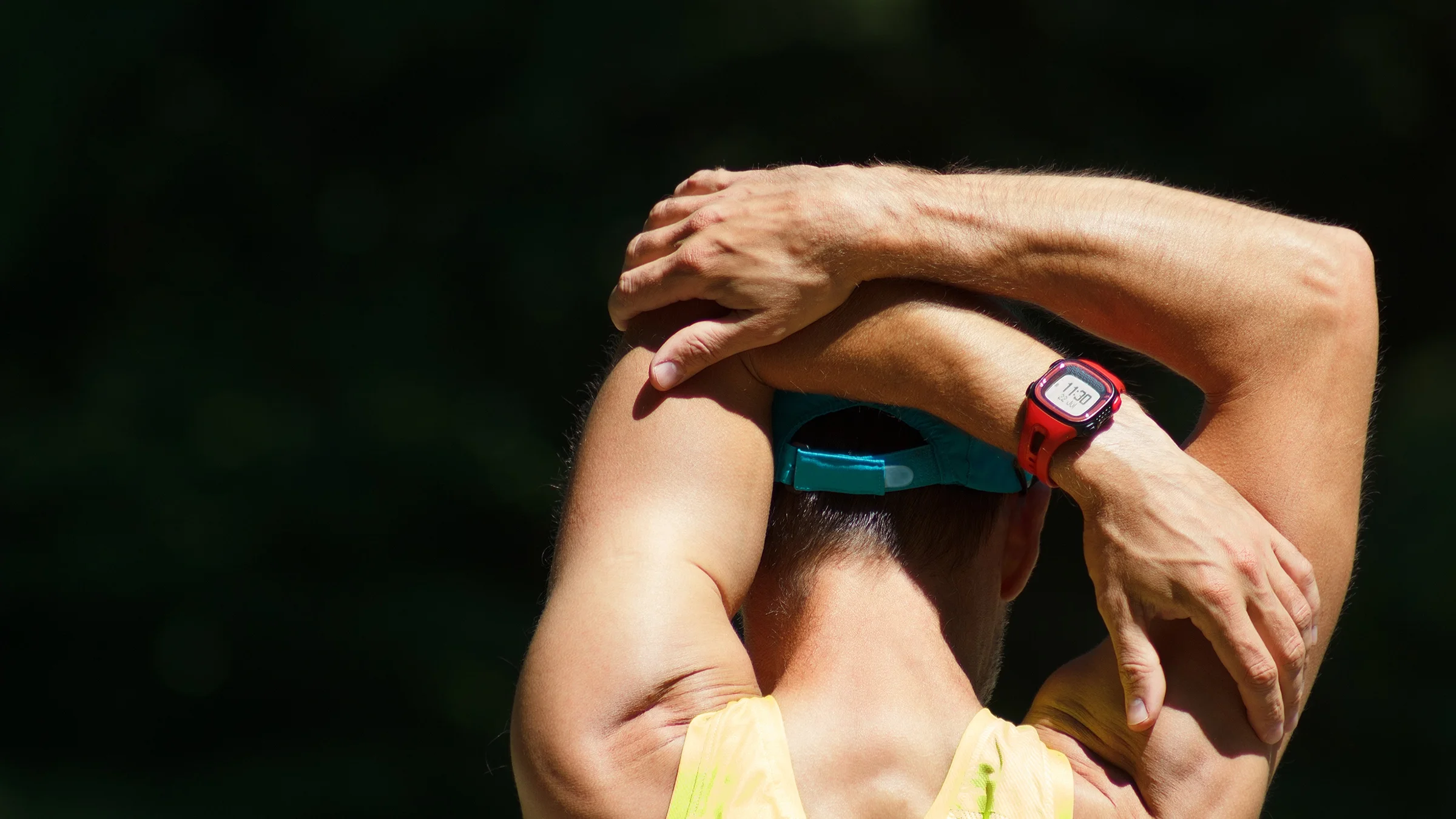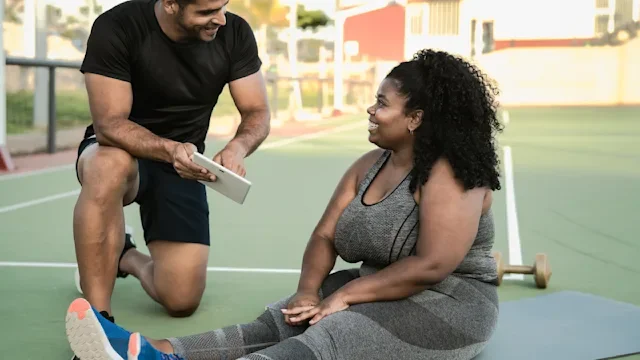Key takeaways:
Stretching after a run can help you recover faster and perform better.
Post-run stretches should target your quadriceps, hamstrings, glutes, and calves. You should also include some stretches for your core and upper-body muscles.
Hold stretches for 10 to 60 seconds, and repeat each one at least twice.
Running has many benefits, from improving your heart health to helping you build stronger bones. But it can be hard on the body, too. It's a high-impact activity that strains the muscles and puts pressure on the joints.
That doesn't mean you have to avoid running. But in order to reap the benefits, you have to take care of your body. This includes stretching after every run. Doing so can help you avoid injury and recover faster.
What are the best post-run stretches?
The best post-run stretches should target the muscles runners use the most. These include:
Quadriceps, at the front of the thigh
Hamstrings, at the back of the thigh
Glutes or butt muscles
Calves, at the back of the lower leg
Search and compare options
You should also include core and upper-body stretches in your post-run routine, as these muscles can become tight during running.
Research suggests that 10 to 30 seconds is enough time to hold a stretch. But older adults may benefit from holding a stretch for up to 60 seconds.
Below are nine helpful post-run stretches. Try to repeat each stretch two to four times.
Seated hamstring stretch
Sit on the ground with your legs extended and your heels on the floor.
Bend your left knee and place the sole of your left foot against your right inner thigh.
Keep your spine straight and your neck neutral as you bend forward to reach for your right foot or shin.
You should feel a gentle stretch along the back of your right thigh. Reach as far as you can, but don't strain or force it. Ease up if you feel any pain.
Release the hamstring stretch and switch sides.
Standing quadriceps stretch
Stand next to a wall or behind a sturdy chair. Place your left hand on it for support.
Bend your right knee and reach back with your right hand to grasp your foot or ankle.
Keep your back straight, and pull your foot toward your right buttock.
You’ll feel a gentle stretch along the front of your right thigh.
Hold the quad stretch, then switch sides.
Standing calf stretch
Stand facing a wall with your feet hip distance apart.
Place your hands on the wall at head height and extend your arms.
Step your right foot back, so you are in a split stance. Keep both feet flat on the floor and your spine and head in a neutral position.
Bend your elbows and move your body toward the wall, keeping both heels on the floor. Keep your right leg straight as you bend your left knee. You'll feel a stretch along the back of your lower right leg.
Increase the stretch by moving your body closer to the wall.
Hold the calf stretch, then switch sides.
Read more like this
Explore these related articles, suggested for readers like you.
Runner's lunge
Start on all fours.
Step your right foot forward and place it outside your right hand. Keep your right knee at a 90-degree angle.
Step your left foot back so your left leg is straight and your knee is elevated off the floor. You can also drop your knee to the floor if keeping it elevated is too much of a strain.
Keep your spine straight and your neck neutral.
Stay here or lower onto your elbows for a deeper stretch.
Hold the runner's lunge, then switch sides.
IT band stretch
Stand with your feet together and your arms at your sides.
Cross your right foot in front of your left foot and place it flat on the floor.
Bend your torso to the left until you feel a stretch along the right iliotibial band (IT band). The IT band is thick fascia or tissue that runs from the outside of the hip to the side of the knee.
Reach your right arm overhead toward the left to deepen the IT band stretch.
Switch sides, crossing the left foot in front of the right.
Butterfly stretch
Sit on the ground with your knees bent and the soles of your feet pressed together. Allow your knees to fall out to the sides.
Reach forward and grab your ankles.
Keep your spine straight and pull your upper body toward your shins. Gently press your legs apart with your elbows. You’ll feel the butterfly stretch along your inner thighs.
Seated spinal twist
Sit on the floor with your legs extended and your spine straight.
Bend your right knee, cross your right foot over your left leg, and place it flat on the floor outside your left thigh.
Place your right hand on the floor behind you for support and begin to rotate your torso to the right.
Extend up through your spine and turn your head in the direction of your torso.
Hold the spinal twist, then switch sides.
Upward-facing dog
Lie on your stomach and place your hands flat on the floor next to the midline of your chest.
Inhale and press your hands into the floor, straightening your arms as you lift your chest and torso off the floor.
Rise up until your arms are fully extended.
Hold the upward-facing dog pose for several breaths, feeling the stretch along your entire front body.
Release the upward-facing dog pose slowly.
Overhead triceps stretch
Stand up tall with your feet hip distance apart.
Raise your arms overhead, bend your right elbow, and place your right palm in the center of your upper back.
Grasp your right elbow with your left hand and gently press down to deepen the stretch along the back of your right upper arm.
Hold the overhead triceps stretch, then switch sides.
Why is cooldown stretching important after running?
It's important to stretch before and after every run. A cooldown routine after a run helps return your elevated heart rate to normal. It also increases blood flow to your muscles, which can aid recovery by reducing lactic acid buildup. By relaxing the muscles you just worked, stretching may prevent post-workout muscle pain and stiffness. Plus, the faster your body recovers after a run, the better your performance will be on your next run.
The bottom line
Stretching is an essential part of any running routine. Post-run stretching helps your body return to its pre-run state and can speed recovery. Do at least one stretch for each of the major muscle groups you worked. Hold each one for 10 to 60 seconds and repeat at least twice. Aim to stretch most days of the week, but especially right after your run, while your muscles are still warm.

Why trust our experts?



References
American Academy on Exercise. (n.d.). Overhead triceps stretch.
American Academy on Exercise. (n.d.). Upward-facing dog.
American Council on Exercise. (n.d.). Standing dorsi-flexion (calf stretch).
Better Health Channel. (2022). Running and jogging — health benefits.
Cline, L. V. D. (n.d.). 5 yoga hip stretches for increasing flexibility. National Academy of Sports Medicine.
Gazendam, M. G. J., et al. (2006). Averaged EMG profiles in jogging and running at different speeds. ScienceDirect.
Kavar, E. (2014). Yoga for neck and back relief. American Academy on Exercise.
Macmillan, C. (2021). How to stretch before a run — properly. Yale Medicine.
Middlebury College Sports Medicine. (n.d.). Static stretching.
Page, P., et al. (2012). Current concepts in muscle stretching for exercise and rehabilitation. International Journal of Sports Physical Therapy.
Tufts Medical Center. (n.d.). Iliotibial band syndrome exercises.
UC San Diego Health. (2022). Hamstring stretch.
University of Nebraska Medical Center. (n.d.). Flexibility exercise #3: Standing quadriceps stretch.
















